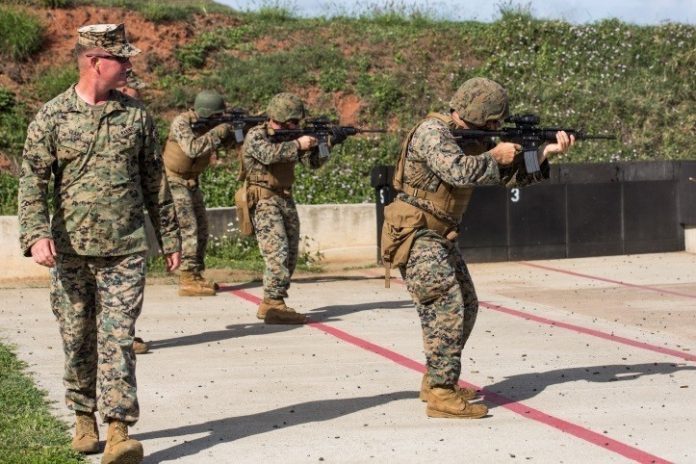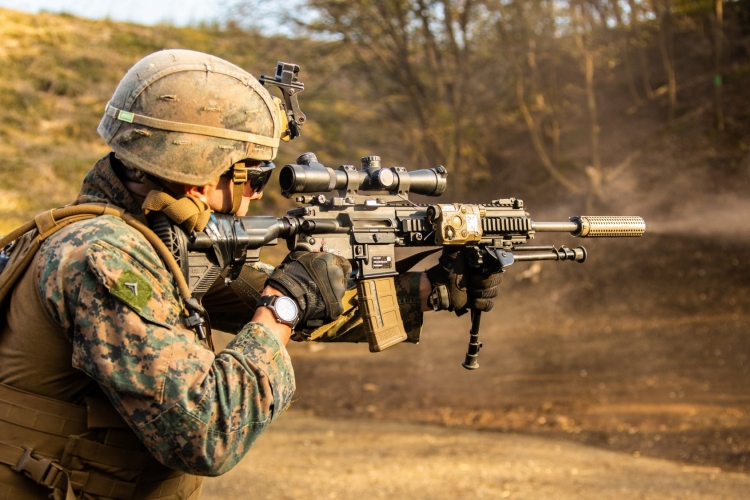
If you’ve ever heard of the Bindon Aiming Concept, I bet you have the wrong impression of what it is. Most people will describe it as a means to shoot a prism or magnified optic with an illuminated reticle at ultra-close ranges. Well, that is factually incorrect. In fact, it’s impressive how many people in the industry do not understand what the Bindon Aiming Concept actually is and what occluded shooting is. Luckily, I’m a nerd with lots of ACOG experience and figured we could break it down and finally end the misunderstanding.
What’s Occluded Shooting?
Occluded shooting is what most people are describing when they say the phrase Bindon Aiming Concept. You can use occluded shooting with a magnified optic to create a fairly efficient close-range option. The less magnification, the better, and it’s why prism optics often use the technique.

When you have a fixed power optic engaging at CQB ranges can be fairly difficult with traditional aiming. Trying to use a 4X optic at seven yards isn’t easy. What you do is keep both eyes open. Look through the optic, but focus on the target. If you have an illuminated reticle, preferably a bright one, it will ‘appear’ on the target.
This method of shooting evolved from the OEG. The OEG was an early red dot that did have a set of lenses to look through. Instead, it had a glowing red dot facing the shooter. When the shooter used both eyes open, the dot appeared on the target and was a very useful close-fighting tool prior to more traditional red dots.
What’s the Bindon Aiming Concept
The Bindon Aiming Concept is designed to work with magnified optics and does use both eyes, but it is for targets at mid to long ranges. Specifically, it’s about aiming at moving targets efficiently with a magnified optic. The optic does require an illuminated reticle.
The photo will look through the magnified optic and find its target. If the target begins to move, the shooter can then use the focus of their nondominant eye to track the target outside of the magnification. An illuminated reticle is easy to see and track, and you can follow the target.

A riflescope uses a monocular view which cuts off 50% of your vision. This makes tracking a target difficult because your field of view is so limited with monocular vision.
Occluded shooting is used for close range, and the Bindon Aiming Concept is designed for distance shooting and tracking a target.
Why the Confusion?
Well, there are a few reasons. First, Glyn Bindon, the Trijicon founder, was heavily involved with the Armson OEG and the idea of occluded shooting. He didn’t invent it, but he was part of its popularity. Second, they are both two eyes opened shooting concepts. The BAC can be used with the ACOG, as well as occluded shooting.

Somewhere along the way, the Bindon Aiming Concept was applied to an entirely different technique. It’s easy to see why the confusion arose and easy to understand why so many people call occluded shooting the Bindon Aiming Concept. Both techniques are valuable to know, especially with LPVOs. Hopefully, we helped educate and illustrate the differences.



